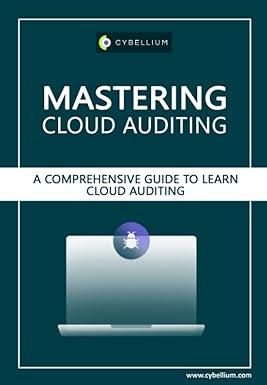Question
Physical Units Method, Relative Sales-Value-at-Split-off Method, Net Realizable Value Method, Decision Making Sonimad Sawmill, Inc. (SSI), purchases logs from independent timber contractors and processes them
Physical Units Method, Relative Sales-Value-at-Split-off Method, Net Realizable Value Method, Decision Making
Sonimad Sawmill, Inc. (SSI), purchases logs from independent timber contractors and processes them into the following three types of lumber products:
Studs for residential construction (e.g., walls and ceilings)
Decorative pieces (e.g., fireplace mantels and beams for cathedral ceilings)
Posts used as support braces (e.g., mine support braces and braces for exterior fences around ranch properties)
These products are the result of a joint sawmill process that involves removing bark from the logs, cutting the logs into a workable size (ranging from 8 to 16 feet in length), and then cutting the individual products from the logs, depending upon the type of wood (pine, oak, walnut, or maple) and the size (diameter) of the log.
The joint process results in the following costs and output of products during a typical month:
| Joint production costs: | |
| Materials (rough timber logs) | $500,000 |
| Debarking (labor and overhead) | 50,000 |
| Sizing (labor and overhead) | 200,000 |
| Product cutting (labor and overhead) | 250,000 |
| Total joint costs | $1,000,000 |
Product yield and average sales value on a per-unit basis from the joint process are as follows:
| Product | Monthly Output | Fully Processed Sales Price |
| Studs | 70,000 | $8 |
| Decorative pieces | 5,000 | 100 |
| Posts | 25,000 | 20 |
The studs are sold as rough-cut lumber after emerging from the sawmill operation without further processing by SSI. Also, the posts require no further processing. The decorative pieces must be planed and further sized after emerging from the SSI sawmill. This additional processing costs SSI $80,000 per month and normally results in a loss of 10 percent of the units entering the process. Without this planing and sizing process, there is still an active intermediate market for the unfinished decorative pieces where the sales price averages $60 per unit.
Required:
1. Based on the information given for Sonimad Sawmill, Inc., allocate the joint processing costs of $1,000,000 to each of the three product lines using the:
a. Relative sales-value-at-split-off method. When required, round decimal values to four places before converting to a percentage. For example, .88349 would be rounded to .8835 and entered as "88.35" percent.
| Monthly Unit Output | Sales Price per Unit | Relative Sales Value at Split-Off | Percent of Sales | Allocated Joint Costs | ||
| Studs | $ | $ | % | $ | ||
| Decorative pieces | % | |||||
| Posts | % | |||||
| Total | $ | % | $ |
(Note: Difference due to rounding.)
b. Physical units method at split-off.
| Units | Percent | x | Joint Cost | = | Allocated Joint Costs | |
| Studs | % | $ | $ | |||
| Decorative pieces | % | |||||
| Posts | % | |||||
| Total | $ |
c. Estimated net realizable value method. When required, round decimal values to four places before converting to a percentage. For example, .88349 would be rounded to .8835 and entered as "88.35" percent.
| Fully Processed Monthly Unit Output | Sales Price per Unit | Net Realizable Value | Percent of Value | Estimated Allocated Joint Costs | ||
| Studs | $ | $ | % | $ | ||
| Decorative pieces | % | |||||
| Posts | % | |||||
| Total | $ | % | $ |
(Note: Difference due to rounding.)
Feedback
1. a. The sales-value-at split-off method allocates joint cost based on each products proportionate share of market or sales value at the split-off point. b. The physical units method allocates the cost in proportion to the number of units and is useful when the value of one product is close to the value of another product. c. The net realizable value method is used when one or more of the joint products cannot be sold at split-off. In this case, a hypothetical market value is constructed so that joint cost allocation can be done as close to the split-off point as possible.
2. Prepare an analysis for Sonimad Sawmill, Inc., to compare processing the decorative pieces further as it presently does, with selling the rough-cut product immediately at split-off.
| Sonimad Sawmill, Inc. | |
| Analysis Report | |
| Monthly unit output | |
| Less: Normal further processing shrinkage | |
| Units available for sale | |
| Final sales value | $ |
| Less: Sales value at split-off | |
| Differential revenue | $ |
| Less: Further processing costs | |
| Additional contribution from further processing | $ |
Feedback
1. Analyze the firm and give calculations. Review methods.
Feedback
Partially correct
Step by Step Solution
There are 3 Steps involved in it
Step: 1

Get Instant Access to Expert-Tailored Solutions
See step-by-step solutions with expert insights and AI powered tools for academic success
Step: 2

Step: 3

Ace Your Homework with AI
Get the answers you need in no time with our AI-driven, step-by-step assistance
Get Started


